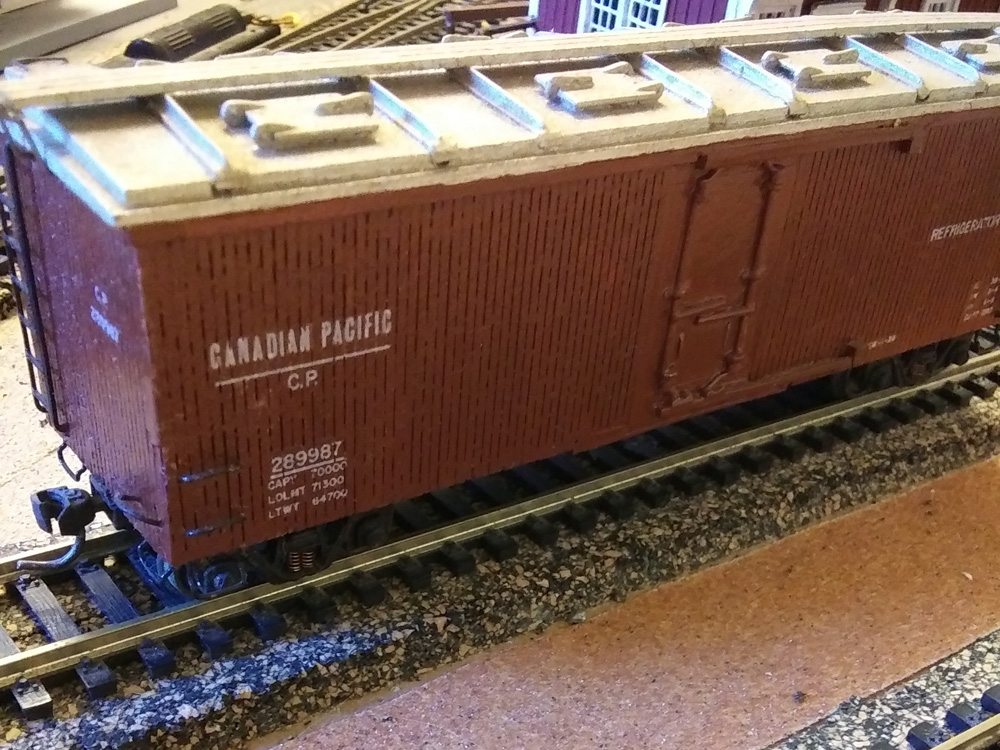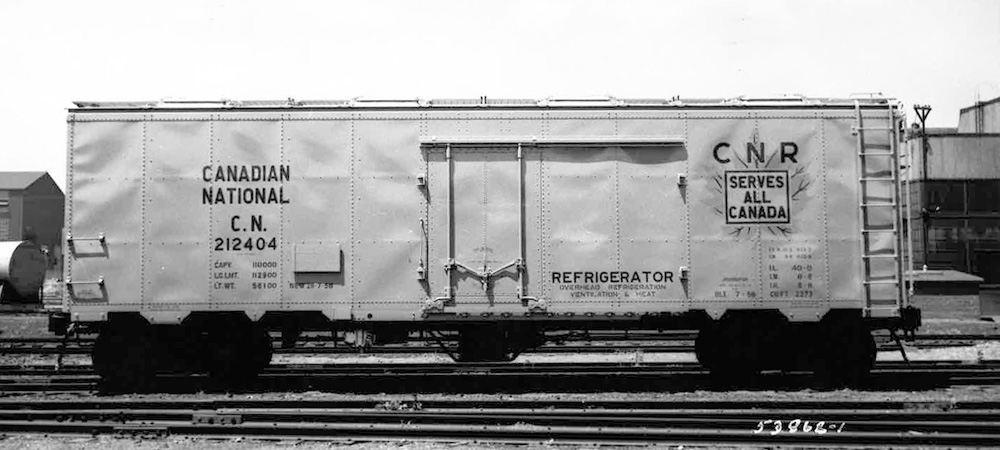
Q: I was given an older model of a reefer car that has hatches across the whole roof instead of on each end (see photo above). Is this a special type of reefer for handling a specific cargo? – Wes Barteck
A: Though that kind of refrigerated car is more common north of the border than in the United States, it’s just a basic reefer. Unlike the end-bunker ice reefer we’re all used to seeing, this is an overhead-bunker reefer. As the name implies, the ice or brine coolant tank stretches along the roof the full length of the car.
Overhead bunker reefer cars were common on Canadian railroads, though a few were rostered by American roads, according to Kalmbach Books author and railroad historian Jeff Wilson. They weren’t developed for a particular cargo, but simply to distribute the cooling more evenly along the car’s length, rather than concentrating the cold on the ends. These reefers were used for any purpose an end-bunker reefer might be put to.

I’m not sure if your car is as built or whether it might have been kitbashed. As you can see in the builder’s photo above of a Canadian National steel overhead bunker reefer car, the door should not be the full height of the side, as it is on your model. That’s because the top two feet or so is occupied by the ice bunker or brine tank. So it’s likely that a previous owner of your car added the extra ice hatches to make it resemble an unavailable prototype.
I was pleased to discover that we published a dimensioned drawing of CN No. 212404, the same steel overhead bunker reefer car in the photo above, in our November 1964 issue. Even though your car is wood-sided, since it appears to have been scratchbuilt or kit-built from wood, it might date from about the same time as our drawing. Even if it’s not, it’s still a fascinating model of an unusual prototype.

Send us your questions
Have a question about modeling, operation, or prototype railroads? Send it to us at AskTrains@Trains.com. Be sure to put “Ask MR” in the subject.














The poster’s car is an Ambroid kit (K-14).